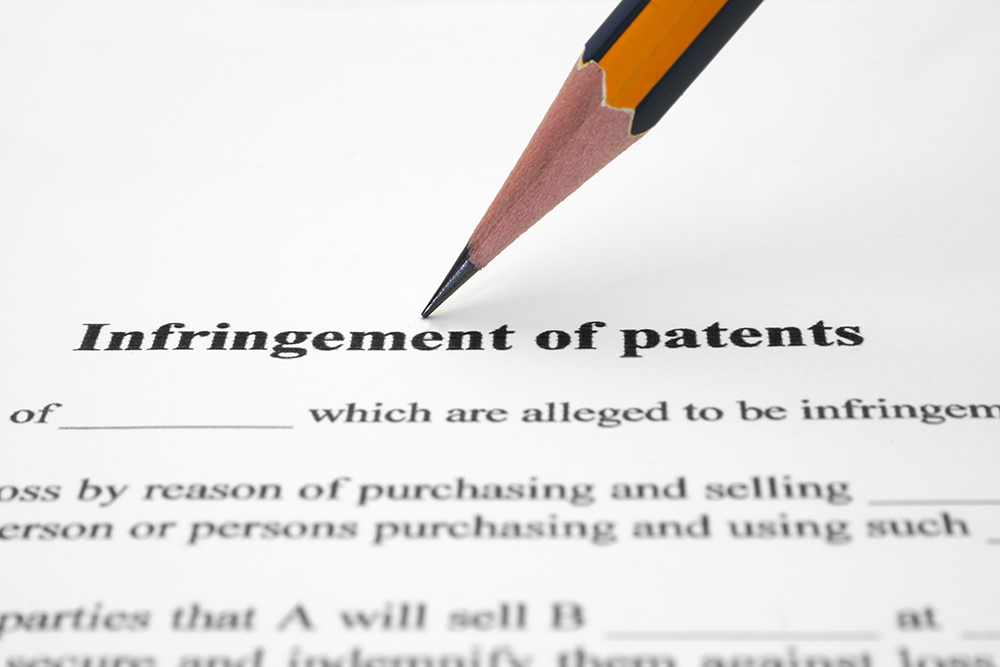Patent infringement lawsuits are not uncommon.
For example, in 2021, chip manufacturing giant Intel was ordered to pay $2.18 billion to VLSI Technology for infringing on eight of that company’s patents. The jury verdict is on appeal by Intel. The award was the third billion-dollar verdict in patent infringement lawsuit history.
Though your patent may not rise to the level of infringement by a multi-billion-dollar company, you still have rights under the law to protect that for which you hold a valid patent.
Action by the patentee (the patent owner) must take place in a federal district court. In this arena, the patentee can seek:
- An injunction
- Basic economic damages – plus potentially enhanced damages
- Attorneys’ fees
Patent Infringement Law in the United States
Patent infringement is defined under U.S. code as “whoever without authority makes, uses, offers to sell, or sells any patented invention, within the United States or imports into the United States any patented invention during the term of the patent therefor, infringes the patent.”
Since intellectual property, which includes patented materials, is governed by federal law, lawsuits must be brought in a federal district court, as mentioned earlier.
One problem with legally pursuing patent infringement is that it often involves more than one party.
An infringer is someone you allege to be responsible for infringing on your patent. A contributory infringer is someone who aids the infringer. In many cases, there are multiple infringers – maybe even multiple companies – that are infringing or contributing.
Steps to Take If You Suspect Patent Infringement
Patent infringement lawsuits are costly. They require exhaustive documentation and digging for evidence against the infringers.
If you do suspect infringement, follow these basic steps:
- Identify the infringers.
- In most cases, start with a demand letter to the infringers before you proceed with a lawsuit. (You certainly should involve an attorney in this, because a letter from an attorney will be taken more seriously.)
- If you and the infringing party can find a common ground, you may opt to grant a license to the infringer to use your patent, which would help defray any future losses through royalty payments.
- If you’ve already lost thousands of dollars, you may want to ask for repayment of that before granting the license.
- If you haven’t hired an attorney by now, you should do so at this point.
You’ll especially want representation if the infringement is ongoing, and your efforts at negotiating a licensing arrangement have fallen on deaf ears. This is when it may be time to consider legal action.
Filing a Lawsuit
The statute of limitations for filing a patent infringement lawsuit is six years. However, if you wait that long, your losses may have already added up astronomically.
Remember, however, that a patent infringement lawsuit is costly both for you and the infringing party. The infringer may be willing to settle just to avoid the cost of a lawsuit.
If you do file a lawsuit, you must get a marshal to serve notice on the infringing parties. You have 120 days to do that. They, in turn, have 21 days to respond.
Typically, they will assert that your patent does not meet the legal requirement of being “new and useful,” “novel,” or “non-obvious,” or that your patent is not valid for other reasons.
If you end up in court facing off with the other party, you bear the responsibility through a “preponderance of evidence” to prove that the other party infringed upon your patent.
To do so, you will need to:
- Prove the validity of your patent. Unlike some other forms of intellectual property, a patent must be granted by the U.S. Patent and Trademark Office (USPTO) to qualify for legal protection. The original patent is good for 20 years, but it can be renewed. Even in the original 20-year term, you must make maintenance payments at three-and-a-half years, seven-and-a-half years, and eleven-and-a-half years. If you do not, your patent can expire.
- Prove infringement. Proving infringement involves three elements: Identifying the infringer(s), showing what the infringement consisted of, and showing the similarity of the infringement to your patent claim.
Courts typically rely on a “plain language” interpretation of the supporting documents you submit to them, so your explanation of the infringement must be understandable to the judge in plain language. You will need to provide specific definitions or illustrations when technical details may not be crystal clear on the surface.
Fortunately, for a patent infringement claim, there is a legal principle called the “doctrine of equivalents.” This means that each element of a patented invention is equivalent to an element in the allegedly infringing invention.
Hire an Experienced Patent Attorney
Just as it’s not advisable to apply for a patent without the help of a patent attorney it is equally important to seek the guidance and representation of legal counsel when you face patent infringement. The court requirements are demanding, and the infringing party has several avenues to challenge your claim of infringement.
If you’re facing patent infringement in Florida, contact the Marks Gray intellectual property team.
